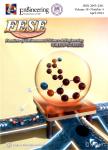Detecting Cryptosporidium parvum and Giardia lamblia by coagulation concentration and real-time PCR quantification
Detecting Cryptosporidium parvum and Giardia lamblia by coagulation concentration and real-time PCR quantification作者机构:Key Laboratory of Urban Environment and Health Institute of Urban Environment Chinese Academy of Sciences Xiamen 361021 China
出 版 物:《Frontiers of Environmental Science & Engineering》 (环境科学与工程前沿(英文))
年 卷 期:2013年第7卷第1期
页 面:49-54页
核心收录:
学科分类:12[管理学] 1201[管理学-管理科学与工程(可授管理学、工学学位)] 08[工学]
基 金:国家863计划 the Hundred Talents Program, Knowledge Innovation Program, Chinese Academy of Sciences 福建省科技厅项目 Xiamen Municipal Bureau of Science and Technology
主 题:Cryptosporidium parvum detection method Giardia lamblia surface water
摘 要:Rapid and sensitive pathogen detection methods are essential for the effective functioning of the water treatment industry, yet for many pathogens, effective detection and removal methods are still lacking. Cryptosporidium parvum oocysts and Giardia lamblia cysts are two of the most common waterborne pathogens currently infecting the water supply. In this study, a new method was developed for the detection of Cryptosporidium parvum oocysts and Giardia lamblia cysts. The method includes multi-steps as coagulation concentration of (oo)cysts in water, the dissolution of the resulting flocs into a small volume using acid, filtration of the (oo)cysts solution, and DNA extraction, purification, and examination using real-time PCR. The method was tested using spiked tap water and reservoir water as references, and the mean recovery ranged from 19.6% to 97.6% for oocysts, and from 51.4% to 98.7% for cysts. The method is economical and convenient, and is especially suitable for relatively high turbidity surface water.



